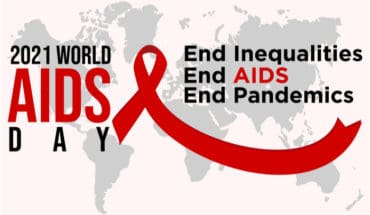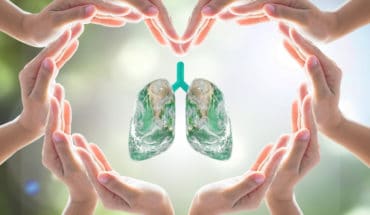In recent years, the introduction of new medicines and treatments has exponentially increased the ability to handle and treat major diseases. According to the World Health Organization (WHO), between 1975 and 2000, the world consumption of pharmaceutical products increased drastically from US$ 70 billion to US$ 317 billion, with a consumption of medicines per capita growing from US$ 17 to US$ 53. Regardless of the increase in world consumption, more than 80% of all pharmaceutical products are consumed by 15% of the world population located in developed countries.
A recent study from the Lancet Commission estimated that currently between US$77.4 and $151.9 billion per year (or $13 to $25 per capita per year) is needed to provide a basic package of 201 essential medicines for all low- and middle-income countries (LMICs). However, in 2010, the majority of low-income countries (LICs) and 13 out of 47 middle-income countries (one in five countries worldwide), spent less than $13 per capita on pharmaceuticals, with LICs spending an average of US$8.6 per person annually. The majority of this funding comes from individuals and households with limited means. This confirms that many people worldwide do not have access to even a limited basket of essential medicines, yet, simultaneously, the world as a whole spends at least 8 times this amount on medicines. There are massive inequities and inefficiencies in financing and governance, linked to an unequal distribution of pharmaceutical consumption across the world. Currently, it is estimated that one-third of the world’s people (up to 50% in some regions of Asia and Africa) are unable to receive or purchase essential medicines on a regular basis. Accordingly, more than two billion people in LMICs lack adequate access to essential medicines. The problem is complex and the reasons for this range from high costs to inadequate distribution, with differing views of stakeholder responsibilities to solve it.
Improving access to medical products is central to the achievement of universal health coverage (UHC), critical to the Sustainable Development Goals (SDGs) of the United Nations under SDG 3, which aims to “ensure healthy lives and promote the wellbeing of all people of all ages”. SDG 3.8 specifically mentions the importance of “access to safe, effective, quality and affordable essential medicines and vaccines for all” as a central component of UHC, and the SDG 3.b emphasises the need to develop medicines to address persistent treatment gaps. Consistent with this vision, in 2015, the Secretary-General Ban Ki-moon announced the appointment of a High-Level Panel on Innovation and Access to Health Technologies to address incoherencies and help improve research and development (R&D) of health technologies and people’s access to essential therapies, whose prices are out-of-reach to patients and governments alike. The panel invites “governments to negotiate global agreements on the coordination, financing and development of health technologies to complement existing innovation models, including a binding R&D Convention that delinks the costs of R&D from end prices”. The Panel also highlights the negative impact that the lack of transparency has on both, health technology innovation and access. The WHO is aligned with this view, acknowledging two recent initiatives on incentives for R&D of health technologies: the Global Antibiotic Research and Development Partnership, a joint venture of WHO and the Drugs for Neglected Diseases initiative (DNDi), and the R&D Blueprint for action to prevent epidemics. In the year ahead, the Lancet Commission published a report on essential medicines for UHC, calling for adjustments in the current Intellectual Property (IP) system, the need to develop alternative business models, public return on public investment, full transparency of R&D costs, a de-linkage model, and use of TRIPS flexibilities in the interest of public health. Similarly, as above, the Commission also highlighted the lack of medicine pricing information and transparency, as well as the lack of quality and safety of medicines in some LMICs. For instance, in sub-Saharan Africa over 122,000 children are estimated to have died in 2013 because of counterfeit and substandard anti-malarial medicines. In Panama and Pakistan, contaminated medicinal products were responsible for 100 and 230 child deaths respectively.
Assured access to essential and high-quality medicines occurs when there is a) a public and private commitment, b) effective and transparent medicine policies, and its suitable implementation, c) strong health systems and regulatory authorities, d) adequate public financing and human resources, e) efficient supply chain and distribution systems, f) control on taxes and duties, g) ethical promotion and rational use of the medicines as well as control of their quality and safety. This complex set of activities requires cooperation between governments, intergovernmental and multilateral organisations, NGOs, private sector companies and academia, amongst others. To implement measures positively and seek both to remove old obstacles and create new opportunities, the different stakeholders have different roles to play, and their contribution will only be effective if they all work together towards the same goals.
Over the last few years, strengthened disease management goals from WHO has generated global health partnerships, bringing together the United Nations, national and local Governments, Universities and philanthropic efforts from organisations and foundations such as the Bill & Melinda Gates Foundation, which has led to significant milestones in the funding, treatment of, and research into the main diseases in LMICs, including HIV/AIDS, malaria and tuberculosis, non-communicable diseases (NCDs) and neglected tropical diseases (NTDs), as well as cross-cutting challenges like women and children’s health. Many pharmaceutical companies have embraced those initiatives and they have increasingly become engaged in access to medicines (ATM) initiatives in LMICs. The world is aware that the pharmaceutical industry faces an ethical and complex dilemma between shareholders’ and patients’ interests, however, they can improve access to their products in LMICs while maintaining profitability and sustainability. Given an increasing investor and consumer focus on corporate social responsibility, it is in the self-interest of pharmaceutical companies to gain positive reputation and recognition globally, by contributing positively to the worldwide access to medicines, and by applying its resources in a socially responsible, environmentally sustainable, and politically acceptable way. In addition, the developing world provides significant opportunities of growth for the pharmaceutical industry, given their emerging middle classes and the expansion of healthcare insurances and infrastructures. In other words, the pharmaceutical industry can help over 2 billion of the world population with no access to affordable essential medicines, by being philanthropic today and making an investment for tomorrow.
There is no doubt that the SDG 3 target and the global awareness of social responsibility have served to mobilise resources and improve coordination aimed at increasing access to essential medicines and treatments to major epidemics in several countries. However, equal access to essential high-quality medicines throughout the world is still lacking, and long-term solutions are still far from adequate. It is an unhappy fact that two-thirds of all deaths of children under the age of 15 are still caused by seven main diseases for which effective prevention and therapies exist. Problems remain in ensuring the availability, safety, affordability and accessibility of medicines in LMICs, and the reasons for this are not only related to financial constraints, but also to the behaviours and relationships between the key stakeholders in the health sector.
The pharmaceutical industry has begun to understand that its behaviour in terms of ethics and access to medicines strengthens its license to operate. However, while the recent 2016 Access to Medicines Index found progress in companies’ efforts to improve access in LMICs, it also evidences that their “good practice in making products available and affordable is limited”, without consistently targeting the “populations with highest needs in their registration, pricing and licensing actions”. Furthermore, according to a study from Harvard University, it is estimated that if low-income countries’ governments devoted 15% of their national budgets to health and added appropriate development assistance, they could finance adequate primary health care for the poor. The time has come for governments and the pharmaceutical industry, together with other stakeholders, to come forward with more substantial commitments and contributions to affordable and equitable access for patients. Long-term access to medicines strategies in LMICs should, therefore, be an additional governmental and corporate responsibility priority for both governments and the pharmaceutical industry respectively.
Partnerships have already shown their value in tackling this problem, such as the Drugs for Neglected Diseases initiative (DNDi) and the Medicines for Malaria Venture (MMV), where their success comes from putting the patients and their respective needs at the centre of the process. In order to find long-term solutions to improve access to medicines in LMICs, it is crucial to continue the creation of global multi-stakeholder partnerships and platforms with public and private commitment, with consensus on the responsibility of each key stakeholder and with a focus on patient needs. Moreover, it’s also vital to ensure aligned partnerships and establish measures to evaluate and monitor the effectiveness of outcomes and the impacts of actions and interventions from Access to Medicines programmes, operated in developing countries. As Dr Margaret Chan, Director-General of the World Health Organisation, wrote, “What gets measured gets done!”
Real change will require a transformation of the supply chain from global to grassroots channels into new sustainable business models, moving local patient needs, diseases priorities, barriers to access and access behaviours to the centre of the decision-making process. In order to get local insights on patient needs and barriers to access, more involvement of civil society is fundamental to the patient access strategy. There is a need to effectively use resources from all stakeholders to overcome the barriers of access to medicines, as this is not a competition between public and private players. Constructive dialogue and collaboration are strongly needed where all parties agree there is an urgent problem which needs to be solved. As countries move towards universal health coverage, new global and local mechanisms are needed to ensure access to medicines worldwide. The inequalities in medicines’ access are one of the most pressing social issues of our time, and need to be addressed as a major priority for the world. In accordance with Lilianne Ploumen, Minister of Foreign Affairs, and Edith Schippers, Minister for Health of the Netherlands, “If we don’t succeed in these efforts, we cannot guarantee people’s access to innovative and affordable medicines and we will not reach the Sustainable Development Goal to ensure healthy lives and wellbeing for all, at all ages. “Leave no one behind”, the UN’s slogan, will prove to be empty words.” affirms.
Today we are presented with an increasing global recognition and acknowledgement of the lack of access to essential medicines worldwide, which has been positively changing dialogues and discussions surrounding this matter. This is now a new focus of attention from different stakeholders and should be harnessed as an opportunity for a higher, stronger and meaningful action on the field. As Ambassador of the One Young World, I find vital to raise awareness amongst the young leaders of today about the relevance of strategic medicines policies to achieve the SDGs and UHC. We are now facing a great opportunity to address this global issue of today and create a positive change in our world of tomorrow.
‘Do not fight against each other, fight together’, a key message highlighted during the 2016 One Young World Summit in Ottawa, Canada. We need the leaders of today, whether they work in governments, international communities, industry and so forth, to “stand on the right side of history” and synergize their efforts, cooperating, committing and contributing further towards the same goal. It’s time to find consensus together, take accountable measures and coordinated actions to avoid further preventable deaths. I’m fully confident that the world can have access to essential, safe and affordable treatments, while supporting UHC and enabling sustainability for all.
“Leave no one behind” today and build a more equitable and sustainable world for tomorrow.
- Access to essential medicines - 30th December 2016






